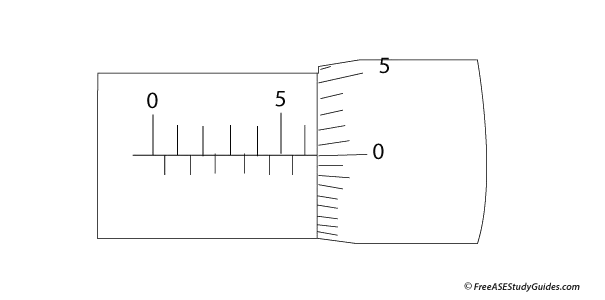ASE A1 Engine Repair Practice Test
56.

The reading on the micrometer above indicates:
- A. 6.05 mm
- B. 6.00 mm
- C. 5.50 mm
- D. 6.50 mm
57. An OHC engine has a metallic rapping sound behind the harmonic balancer. Which of the following is causing this noise?
- A. A bad exhaust valve.
- B. A worn camshaft bearing.
- C. A broken valve spring.
- D. A worn crankshaft bearing.
58. A vehicle with an eight-cylinder engine and a manual transmission has a knocking sound at the back of the engine whenever the engine is running. Which of these could be the cause?
- A. A worn timing belt.
- B. A loose harmonic balancer.
- C. Loose flywheel bolts.
- D. A faulty power steering pump.
59. The oil pressure switch on an engine may be faulty. All of the following are true about oil pressure switches EXCEPT:
- A. Test this switch with a digital multimeter.
- B. The warning lamp turns off as oil pressure rises.
- C. This sensor is a variable resistor.
- D. Set the meter to Ohms to check for continuity.
60. During a cylinder leakage test, a hissing sound is heard from the throttle body. This sound indicates:
- A. The engine has a bad exhaust valve.
- B. The engine has worn piston rings.
- C. The engine has a bad intake valve.
- D. The engine has a leaking head gasket.
